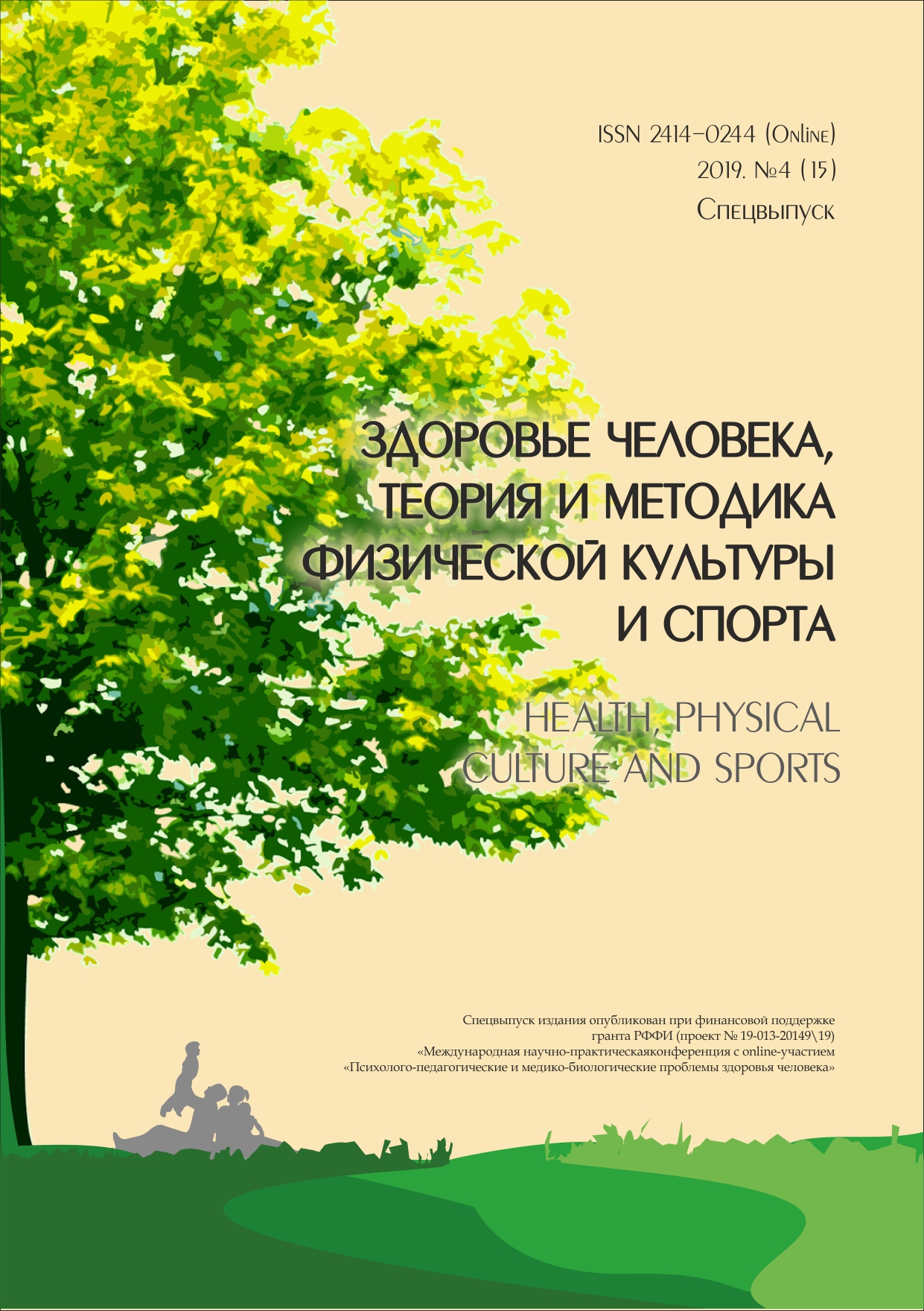SPORTS ADDITIVES: TYPES AND FEATURES OF INFLUENCE ON THE LEVEL OF PHYSICAL EFFICIENCY
Abstract
Traditional nutritional disorders are invariably associated with a shortage of nutrientsof different levels: animal proteins, dietary fiber, vitamins, minerals, polyunsaturated fatty acids.The imbalance of the diet inevitably leads to the emergence and development of nutritionaldiseases, leading to a decrease in efficiency, and, consequently, competitiveness. In athletes ofhigher achievements, in people leading an active lifestyle, the problem of nutritional deficiencies isaggravated by an increase in their expenses due to an increase in the level of metabolic processesduring muscular activity, which is accompanied by psycho — emotional stress. One of the effectivemeasures to maintain the stability of body systems is nutrition correction using dietary supplements(BAA), which are successfully used in sports practice to maintain a high level of physical performanceduring the preparatory and competitive periods, to activate recovery processes after the end of thecompetition, as well as when pairing –training activities. However, there is a shortage of domesticsports nutrition products, including dietary supplements, an insufficient level of substantiation ofnew developments, evidence of their effectiveness and safety.The article discusses the main classes of sports supplements, their classification according totheir effectiveness, the purpose of the intake and the main effect on the body of athletes, as well asmethods of administration and dose.
Downloads
References
Вековцев А. А., Позняковский Д. В., Австриевских А. Н. Разработка, оценка качества и эффективности биологически активных добавок для спортивного питания // Известия высших учебных заведений. Пищевая технология. 2007. № 2. С. 107.
Зиамбетов В. Ю. Отношение студентов факультета физической культуры к спортивному питанию // Физическая культура: воспитание, образование, тренировка. 2014. № 2. С. 28–30.
Португалов С. Н. Специализированные биологически активные и пищевые добавки в спортивном питании // Вестник спортивной науки. 2006. № 1. С. 18–22.
Захарова А. В., Алексеева Е. Е., Радько Д. О. Спортивное питание // Стратегия развития спортивномассовой работы со студентами: материалы Международной научно-практической конференции. Тюмень, 2016. С. 61–65.
Штерман С. В., Сидоренко Ю. И. Товароведная классификация продуктов интенсивного спортивного питания // Товаровед продовольственных товаров. 2011. № 8. С. 31–38.
Гаврилова Н. Б., Щетинин М. П., Молибога Е. А. Современное состояние и перспективы развития производства специализированных продуктов для питания спортсменов // Вопросы питания. 2017. Т. 86, № 2. С. 100–107.
Латков Н. Ю., Вековцев А. А., Петров А. В., Позняковский В. М. Питание спортсменов в тренировочный период: эффективность применения БАД // Вестник ЮУрГУ. Серия «Пищевые и биотехнологии». 2015. Т. 3, № 4. С. 88–93. DOI: 10.14529/food150412
Никитюк Д. Б., Клочкова С. В., Рожкова Е. А. Спортивное питание: требования и современные подходы // Вопросы диетологии. 2014. Т. 4, № 1. С. 40–43.
Харченко А. А., Яловенко О. В. Актуальность использования и особенности применения спортивного питания // Современные тенденции развития науки и технологий. 2016. Т. 6, № 4. С. 149–154.
Гришкевич М. С., Харина И. Ф. Изучение концентрации внимания у студентов-спортсменов разного уровня спортивного мастерства // Дневник науки. 2018. № 11 (23). С. 9.
Иванов В. Д., Мунирова Р. Р. Спортивное питание как важнейшее условие успеха спортсмена // Научные исследования: от теории к практике. 2015. № 5 (6). С. 194–195.
Красина И. Б., Бродовая Е. В. Современные исследования спортивного питания // Современные проблемы науки и образования. 2017. № 5. [Электронный ресурс]. URL: http://www.scienceeducation.ru/ru/article/view?id=26809 (дата обращения: 26.12.2018).
Маркелов И. П., Талызов С. Н. Основы спортивного питания в системе подготовки спортсмена // Новое слово в науке: перспективы развития. 2016. № 1–1 (7). С. 245–247.
An author should not normally publish manuscripts describing essentially the same research in multiple journals or publication venues. Such redundant publication is generally considered to constitute unethical publishing behavior, and if discovered may result in a manuscript under consideration being rejected, or a published article being retracted.
Authors of manuscripts reporting on original research should present an accurate account of the work performed, accompanied by an objective discussion of its significance. Underlying data should be represented accurately in the manuscript. The manuscript should contain sufficient detail and references to permit others to replicate the work. The fabrication of results and the making of fraudulent or knowingly inaccurate statements constitute unethical behavior and may be cause for rejection or retraction of a manuscript or published article.





